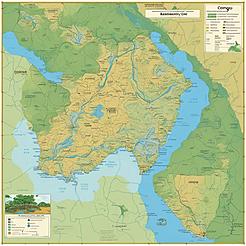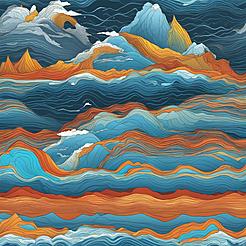
Climate change is a topic that impacts all living beings on Earth. Imagine a world where seasons become unpredictable, where extreme weather events are more frequent, and where ecosystems struggle to adapt to rapidly changing conditions. This is the reality we face today due to the patterns of climate change.
**Why it is important:**
Understanding climate patterns and their impacts is crucial because it helps us comprehend the complex interactions between the atmosphere, oceans, land, and living organisms. By studying these patterns, scientists can predict future climate trends, develop strategies to mitigate the effects of climate change, and protect vulnerable ecosystems and communities.
**Interesting Fact:**
Did you know that the Earth's climate has undergone natural variations throughout its history? However, the rapid changes we are currently experiencing are primarily driven by human activities, such as burning fossil fuels and deforestation.
**Detailed Explanation:**
1. **Greenhouse Effect:** The greenhouse effect is a natural process where certain gases in the Earth's atmosphere trap heat from the sun, keeping our planet warm enough to support life. However, human activities have intensified this effect by releasing additional greenhouse gases, such as carbon dioxide and methane, into the atmosphere. This leads to global warming and climate change.
2. **Ocean Circulation:** Ocean currents play a crucial role in regulating the Earth's climate. For example, the Gulf Stream carries warm water from the Gulf of Mexico to the North Atlantic, influencing weather patterns in Europe. Changes in ocean circulation patterns can have far-reaching impacts on global climate systems.
3. **Impacts on Human Societies:** Climate change poses significant challenges to human societies worldwide. Rising sea levels threaten coastal communities, extreme weather events disrupt agriculture and infrastructure, and changes in temperature and precipitation patterns affect food security and water resources.
**Real-life Examples:**
1. **Melting Arctic Ice:** The Arctic region is experiencing rapid ice melt due to rising temperatures, leading to habitat loss for polar bears and other wildlife. This not only affects the ecosystem but also indigenous communities that rely on Arctic resources.
2. **Coral Bleaching:** Warming ocean temperatures are causing coral reefs to expel the algae living in their tissues, resulting in coral bleaching. This phenomenon weakens coral structures and disrupts marine biodiversity, impacting fisheries and tourism industries.
3. **Heatwaves and Droughts:** Heatwaves and droughts are becoming more frequent and intense in many parts of the world, affecting crop yields, water availability, and human health. These extreme events highlight the urgent need for climate resilience strategies.
**Crib Sheet:**
- Greenhouse Effect: Natural process of heat trapping gases in the atmosphere.
- Ocean Circulation: Currents influence climate patterns globally.
- Impacts on Human Societies: Rising sea levels, extreme weather events, and food/water security challenges.
**Memorization Technique:**
To remember the key points, create an acronym using the first letter of each concept: GOI (Greenhouse Effect, Ocean Circulation, Impacts on Human Societies).
**Reflective Questions:**
1. How do you think climate change is affecting ecosystems in your region?
2. What actions can individuals and communities take to mitigate the impacts of climate change?
3. Why is it important for us to study climate patterns and their impacts on a global scale?
By understanding the patterns of climate change and their far-reaching impacts, we can work together to address this critical issue and create a more sustainable future for all living beings on Earth.




